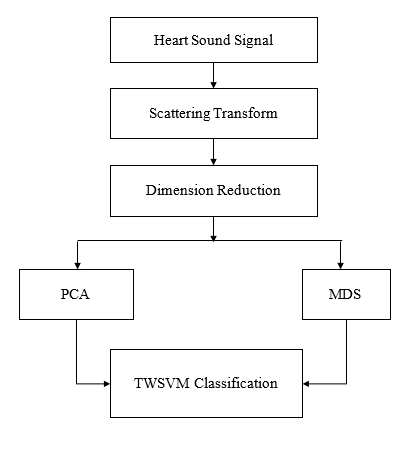- ALL COMPUTER, ELECTRONICS AND MECHANICAL COURSES AVAILABLE…. PROJECT GUIDANCE SINCE 2004. FOR FURTHER DETAILS CALL 9443117328


Projects > ELECTRONICS > 2020 > IEEE > DIGITAL SIGNAL PROCESSING
By classifying the heart sound signals, it can provide very favorable clinical information to the diagnosis of cardiovascular diseases. According to the characteristics of heart sound signals which are complex and difficult to classify and recognize, a new method of feature extraction and classification about heart sound signal is proposed by a combination of wavelet scattering transform and twin support vector machine in this system. The method is as follows: The heart sound signal data set is firstly divided into two parts, one as a training set and the other as a testing set. Then the wavelet scattering transform is applied to the heart sound signals in the training set and the testing set. The scattering transform is a new time-frequency analysis method. Thus obtain the scattering feature matrix of the heart sound signal. Due to the large dimension of scattering feature matrix, this proposed system uses multidimensional scaling (MDS) method to reduce the dimension. This method is compared with the classical dimension reduction method-principal component analysis (PCA). Finally, the dimensionality-reduced feature matrix is input into the twin support vector machine (TWSVM) for training. After training the classifier to get the optimal parameters, the dimensionality-reduced scattering feature matrix of the testing signal is input into the classifier for testing.
This system proposes a method for classification of cardiac sound signals using constrained Tunable-Q wavelet transform (TQWT). The heart sounds and murmur have been separated using constrained TQWT. The separation has led to more diagnostic features with same parameters. TQWT and Fourier–Bessel (FB) expansion separated both heart sounds and murmur. However, the adaptively selected features have been used to obtain the final feature set for subsequent classification of cardiac sound signals using least squares support vector machine (LS-SVM) with various kernel functions.
The processing procedures of heart sound signal include heart sound signal acquisition, heart sound signal de-noise, heart sound signal segmentation, feature extraction, and classification. The heart sound signal acquisition and heart sound signal de-noise have been firstly finished in the proposed algorithm. Heart sound signal segmentation is not required here. The major work of this proposed system is feature extraction and heart sound signal classification.
BLOCK DIAGRAM
